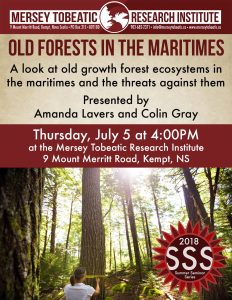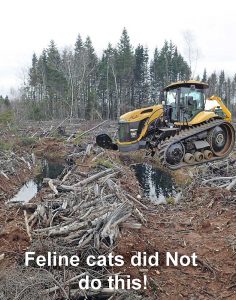 The Mersey Tobeatic Research Institute (MTRI) 2018 Summer Seminar Series has begun. Just gone by (Thurs Jun 28): Freya Clark of the Medway Community Forest Co-op talked on the topic “What is Community Forestry?”.
The Mersey Tobeatic Research Institute (MTRI) 2018 Summer Seminar Series has begun. Just gone by (Thurs Jun 28): Freya Clark of the Medway Community Forest Co-op talked on the topic “What is Community Forestry?”.
Just announced:
Old Forests in the Maritimes
A presentation by Amanda Lavers and Colin Grey
Date & Time: Thurs 5 July 2018 beginning at 4 p.m.
Place: Mersey Tobeatic Research Institute (MTRI), 9 Mount Merritt Road Kempt, Queens County.
(View their Contact us page for more details on how to get there.)
This is a timely presentation, given recent controversy over cutting of Old Growth on Crown land in eastern Nova Scotia – view DNR confirms Loon Lake area cuts included Old Growth (post, May 17, 2018) and the soon to be released Independent Review of Forestry Practices in Nova Scotia.
Amanda Lavers, director of MTRI is an author of a recently published paper on “Old forest policy and regulatory frameworks in Nova Scotia and New Brunswick with a comparison to British Columbia“. Colin Gray has been serving as the coordinator and chief field hand for MTRI’s Old Forest Project, employing the NSDNR old forest protocol to assess sites in the Maritimes for Old Growth status.







